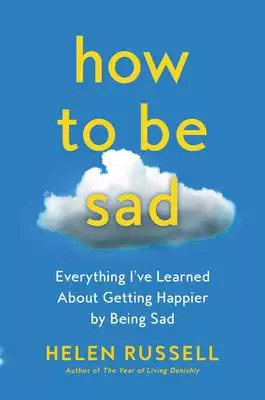Living force的問題,我們搜遍了碩博士論文和台灣出版的書籍,推薦Karasuma, Tasuku寫的 No Guns Life, Vol. 13: Volume 13 和Russell, Helen的 How to Be Sad: Everything I’ve Learned about Getting Happier by Being Sad都 可以從中找到所需的評價。
這兩本書分別來自 和所出版 。
國立體育大學 競技與教練科學研究所 鄭世忠、錢桂玉所指導 杨永的 運動訓練與停止訓練對中老年人骨骼肌氧合能力與身體功能表現之影響 (2022),提出Living force關鍵因素是什麼,來自於爆發力訓練、阻力訓練、心肺訓練、近紅外線光譜儀、停止訓練。
而第二篇論文國防醫學院 醫學科學研究所 高啟雯所指導 謝慧玲的 以疾病不確定感理論發展整合性心動健康網路照顧模式提升心房顫動病人因應策略之成效探討 (2021),提出因為有 整合性照顧、移動健康醫療、心房顫動、疾病不確定感、因應策略的重點而找出了 Living force的解答。
No Guns Life, Vol. 13: Volume 13

為了解決Living force 的問題,作者Karasuma, Tasuku 這樣論述:
Ex-soldier Juzo Inui has one question--who turned him into a cyborg and erased his memories?After the war, cyborg soldiers known as the Extended were discharged. Juzo Inui is one of them, a man whose body was transformed, his head replaced with a giant gun. With no memory of his previous life--or wh
o replaced his head and why--Inui now scratches out a living in the dark streets of the city as a Resolver, taking on cases involving the Extended. With the activation of the Wide-Range Harmony device, the Extended throughout the city are under C.O.O. Honest’s control. But thanks to Suiso’s desperat
e sacrifice, Juzo managed to escape its effects. As Honest prepares to enact the final step in her plan, overwriting the minds of every Extended, Juzo desperately races to stop her. The confrontation will force him to take on the most powerful adversary he’s yet faced--himself.
Living force進入發燒排行的影片
[有中英文字幕] 台灣如何幫助世界!Taiwan is a Force for Good in the World! How Taiwan Helps Other Countries Around the World!
Taiwan is small, but remarkably helpful and powerful in relation to its size. How does Taiwan help other countries around the world and what else does Taiwan have to contribute to the rest of the world.
請多多支持,謝謝!Please support us here:
PATREON: https://www.patreon.com/thisistaiwan
PAYPAL: https://www.paypal.com/paypalme/Thistaiwan
[請訂閱] My other channel:
https://www.youtube.com/channel/UCCjArF8x9pnulWoxuWPhX_g
If you enjoyed this video, please join us on:
INSTAGRAM:
https://www.instagram.com/this_is_tai_wan/
FACEBOOK:
https://www.facebook.com/thisistaiwon/
MUSIC:
Pixel Pig by Di Young https://youtu.be/TiC7_167hQ0
Creative Commons Attribution license
Free Download / Stream: https://bit.ly/di-young-pixel-pig
Music promoted by Audio Library https://youtu.be/eFmIPr6ZYuM
First Light - Atch https://soundcloud.com/atch-music
Creative Commons — Attribution 3.0 Unported — CC BY 3.0
Free Download / Stream: http://bit.ly/-first-light
Music promoted by Audio Library https://youtu.be/0SVbJldc5wM
[地點] Filming locations:
[台灣] Taiwan
* Please note that some of the footage in this video was taken PRIOR to the COVID-19 pandemic.
Video quality:
[1080p 60fps]
[我的裝備] My gear:
Manfrotto tripod
iPhone 8
Nikon D5600
Voical Air wireless microphone
MacBook Pro
#台灣 #台北 #Taiwan #Taipei
運動訓練與停止訓練對中老年人骨骼肌氧合能力與身體功能表現之影響
為了解決Living force 的問題,作者杨永 這樣論述:
運動是一種改善中老年人骨骼肌氧合能力、提高肌肉力量並最終影響整體身體功能表現的有效方式。然而,較少的研究評估不同運動類型之間訓練效益的差異。此外,由於中老年人生病、外出旅行與照顧兒童等原因,迫使運動鍛煉的中斷。如何合理安排運動訓練的週期、強度與停訓週期,以促使中老年人在未來再訓練快速恢復以往訓練效益,目前亦尚不清楚。本文以三個研究建構而成。研究I:不同運動訓練模式對中老年人的骨骼肌氧合能力、肌力與身體功能表現的影響。以此探討50歲及以上中老年人進行每週2次為期8週的爆發力、阻力訓練以及心肺訓練在改善中老年人肌肉組織氧合能力、與肌肉力量身體功能效益的差異。我們的研究結果表明:爆發力組在改善下肢
肌力、最大爆發力與肌肉品質方面表現出較佳的效果。心肺組提高了30s坐站測試成績並減少了肌肉耗氧量,從而改善了中老年人在30s坐站測試期間的運動經濟性。年紀較高的肌力組則對於改善平衡能力更加有效。此外,三組運動形式均有效改善了中老年人人敏捷性。研究 Ⅱ:停止訓練對運動訓練後中老年人肌力與身體功能表現的影響:系統性回顧與meta分析。本研究欲探討停止訓練對運動訓練後中老年人肌力與身體功能表現訓練效益維持的影響。我們的研究結果表明:訓練期大於停止運動訓練期是肌力維持的重要因素。若訓練期
How to Be Sad: Everything I’ve Learned about Getting Happier by Being Sad

為了解決Living force 的問題,作者Russell, Helen 這樣論述:
In any human life there are going to be periods of unhappiness. That is part of the human experience. Learning how to be sad is a natural first step in how to be happier.--Meik Wiking, CEO of the Happiness Research InstituteHow to Be Sad is a poignant, funny, and deeply practical guide to better
navigating one of our most misunderstood human emotions. It’s a must-read for anyone looking to improve their happiness by befriending the full range of their own feelings. - Laurie Santos, Chandrika and Ranjan Tandon Professor of Psychology at Yale University and host of The Happiness Lab podcastAn
expert on the pursuit of happiness combines her powerful personal story with surprising research and expert advice to reveal the secret of finding joy: allowing sadness to enrich your life and relationships.Helen Russell has researched sadness from the inside out for her entire life. Her earliest m
emory is of the day her sister died. Her parents divorced soon after, and her mother didn’t receive the help she needed to grieve. Coping with her own emotional turmoil--including struggles with body image and infertility--she’s endured professional and personal setbacks as well as relationships tha
t have imploded in truly spectacular ways. Even the things that brought her the greatest joy--like eventually becoming a parent--are fraught with challenges.While devoting a career to writing books on happiness, Helen discovered just how many people are terrified of sadness. But the key to happiness
is unhappiness--by allowing ourselves to experience pain, we learn to truly appreciate and embrace joy. How to Be Sad is a memoir about living with sadness, as well as an upbeat manifesto for change that encourages us to accept and express our emotions, both good and bad. Interweaving Helen’s perso
nal testimony with the latest research on sadness--from psychologists, geneticists, neuroscientists and historians--as well as the experiences of writers, comics, athletes and change-makers from around the world, this vital and inspiring guide explores why we get sad, what makes us feel this way, an
d how it can be a force for good. Timely and essential, How to Be Sad is about how we can better look after ourselves and each other, simply by getting smarter about sadness.
以疾病不確定感理論發展整合性心動健康網路照顧模式提升心房顫動病人因應策略之成效探討
為了解決Living force 的問題,作者謝慧玲 這樣論述:
正文目錄正文目錄『表』目錄 IV『圖』目錄 V『附錄』目錄 VII中文摘要 VIII英文摘要 X第一章 緒論 1 第一節 研究背景、動機及重要性 1 第二節 研究目的 7第二章 文獻查證 8 第一節 心房顫動疾病簡介 8 第二節 疾病不確定感理論 15 第三節 疾病不確定感相關研究 22 第四節 整合性健康網路照顧模式的發展及運用 31第三章 研究架構與假設 36 第一節 研究架構 36 第二節 研究假設 37 第三節 名詞界定 38第四章 研究方法與過程 43 第一節 研究設計 43 第二節 研究對象及場所 45 第三節 研究工具 46
第四節 研究工具之信效度檢定 52 第五節 研究過程 59 第六節 研究倫量 63 第七節 資料處理與統計分析 64第五章 研究結果 66 第一節 心房顫動病人的基本屬性68 第二節 心房顫動病人的症狀困擾、疾病知識、社會支持、疾病不確定感、因應策略及心理困擾之前後測情形 76 第三節 介入「整合性心動健康網路照顧模式」對於心房顫動病人症狀困擾、疾病知識、社會支持、疾病不確定感、因應策略及心理困擾之成效 85第六章 討論 107 第一節 心房顫動病人的基本屬性現況分析 108 第二節 介入「整合性心動健康網路照顧模式」對於改善心房顫動病人症狀困擾之成效 111
第三節 介入「整合性心動健康網路照顧模式」對於改善心房顫動病人疾病知識之成效 113 第四節 介入「整合性心動健康網路照顧模式」對於改善心房顫動病人社會支持之成效 115 第五節 介入「整合性心動健康網路照顧模式」對於改善心房顫動病人疾病不確定感之成效 117 第六節 介入「整合性心動健康網路照顧模式」對於改善心房顫動病人因應策略之成效 119 第七節 介入「整合性心動健康網路照顧模式」對於改善心房顫動病人心理困擾之成效 121 第八節 研究限制 124第七章 結論與建議 125 第一節 結論 125 第二節 建議 127參考文獻 129附錄 141『表』目錄表1. 資料處理
與分析 65表2. 心房顫動病人之人口基本屬性 70表3. 心房顫動病人的疾病特性 74表4. 心房顫動病人症狀困擾、疾病知識、社會支持、疾病不確定感、因應策略及心理困擾之前測與後測結果 83表5. 以 GEE 方法探討整合性心動健康網路照顧模式於心房顫動病人症狀困擾改變之成效 86表6. 以 GEE 方法探討整合性心動健康網路照顧模式於心房顫動病人疾病知識改變之成效 89表7. 以GEE方法探討整合性心動健康網路照顧模式於心房顫動病人社會支持改變之成效 92表8. 以GEE方法探討整合性心動健康網路照顧模式對於心房顫動病人疾病不確定感之改變成效 95表9. 以GEE方法探討整合性心動健康網路
照顧模式對於心房顫動病人因應策略改變之成效 98表10. 以GEE方法探討整合性心動健康網路照顧模式對於心房顫動病人心理困擾改變之成效 103『圖』目錄圖1. 不確定感理論架構 21圖2. 研究架構圖 36圖3. 研究設計 44圖4. 流程圖 67圖5. 兩組在第三版症狀頻率-嚴重程度評估量表之症狀頻率次量表平均分數於前測、後測第一個月、第三個月與第六個月的變化 87圖6. 兩組在心房顫動知識量表平均分數於前測、後測第一個月、第三個月與第六個月的變化 90圖7. 兩組在醫療社會支持量表平均分數於前測、後測第一個月、第三個月與第六個月的變化 93圖8. 兩組在中文版Mishel疾病不確定感量表平
均分數於前測、後測第一個月、第三個月與第六個月的變化 96圖9. 兩組在簡易因應量表之應對因應策略次量表平均分數於前測、後測第一個月、第三個月與第六個月的變化 99圖10. 兩組在簡易因應量表之迴避因應策略次量表平均分數於前測、後測第一個月、第三個月與第六個月的變化 100圖11. 兩組在醫院焦慮憂鬱量表平均分數於前測、後測第一個月、第三個月與第六個月的變化 104圖12. 兩組在醫院焦慮憂鬱量表之焦慮次量表平均分數於前測、後測第一個月、第三個月與第六個月的變化 105圖13. 兩組在醫院焦慮憂鬱量表之憂鬱次量表平均分數於前測、後測第一個月、第三個月與第六個月的變化 106『附錄』目錄附錄一
心房顫動病人基本屬性量表 附錄一附錄二 第三版症狀頻率-嚴重程度評估量表之症狀頻率次量表 附錄二附錄三 心房顫動知識量表 附錄三附錄四 醫療社會支持量表 附錄四附錄五 中文版Mishel疾病不確定感量表 附錄五附錄六 簡易因應量表 附錄六附錄七 醫院憂鬱焦慮量表 附錄七